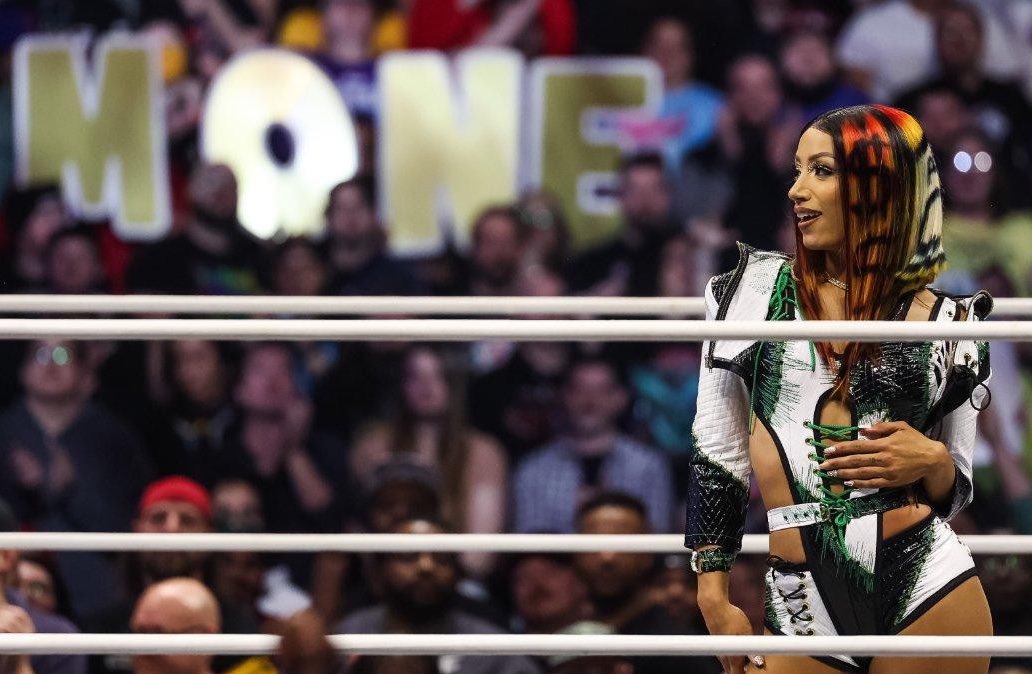I’m an optimist when it comes to AEW. Even when things go wrong, or mistakes happen, the company has shown that it will reflect. Tony Khan and Creative will eventually address the dissatisfaction.
Since November of last year, multiple planned changes have clearly attempted to address the turbulent creative of 2023. The Continental Classic, the return of the rankings, and the reinvention of The Elite after a “putrid” year have all been attempts to restore the feeling.
I’m still optimistic about the AEW women’s division. At the end of November, I wrote about Toni Storm and Julia Hart becoming women’s champions and that AEW could learn from their mistakes.
Some issues have been addressed, and progress has been noticeable. However, it’s still mostly incremental. This has left me cynical that AEW can sustain a woman’s revolution unless it addresses the obvious issue.
The Dynamite Dilemma
Significantly, there is still only one woman’s match on AEW Dynamite per week. Yes, February 21st featured two women’s matches. Yet collectively, both matches together went less than ten minutes. Madison Rayne’s injury may have affected this, but these matches were the exception rather than the rule.
One match per Dynamite remains the pattern. Picture-in-picture breaks also continue to impact women’s matches.
Yes, AEW Rampage and AEW Collision have multiple women’s matches, and yes, more women’s storylines are being featured across all shows. This is further progress compared to last year. However, this limited time on the flagship show suggests a clear message about the importance of the women’s division. Until this changes, that cynicism will stay.
What Revolution Means and Shows
On the one hand, the word revolution suggests empowerment. A revolution occurs when ideas about change develop into action. When WWE used the term “the women’s revolution,” its marketing emphasized the positive, almost sexy, media-appealing associations of the word. On the other hand, a revolution points out something wrong that needs changing.
It implies the old regime oppressed, overlooked, and marginalized those who led the revolt.
Tony Khan has not used the phrase himself, but it’s been used within the AEW fandom for a while now. It’s been in my mind since November. At World’s End, Khan suggested the renewed focus on the women’s division was “very much by design.” If you remove the PR presentation, like the WWE’s Women’s Revolution, it reveals the lack of attention given to the female wrestlers previously.
Now, it would be unfair to suggest AEW has never cared about its women’s division. Throughout its history, attempts have been made to grow the division, but factors in and out of the company’s control have made it difficult.
However, compared to the men’s division, the women’s division has not received the planning or attention to correct issues when things have gone wrong. Instead, the same strategy has been repeated, failed, and reused since the beginning.
Starting with a Boom, Fading to a Whimper
At AEW’s launch event, Brandi Rhodes promised equal pay for women based on card position and a “best in the world” women’s division. Then, prior to the first Dynamite, Tony Khan on Wade Keller’s podcast said AEW would use Japanese Joshi wrestlers like WCW utilized its cruiserweight division.
The first Dynamite and the first women’s match determined the inaugural-ever AEW Women’s World Champion: Riho vs. Nyla Rose. Britt Baker joined commentary to help familiarize the audience with the first woman announced to have signed with AEW. The match itself was archetypical and refreshing.
It gripped many fans. The underdog overcame the monster. Post-match, Kenny Omega came to save the new champion, Riho, giving the new champion some legitimacy. This also hinted that this feud was not over.
The division started with a boom. Realistically, it needed more star power. With time and effort, however, there was potential. Of the initial eighteen women, there were four Joshis, two other monster veterans in Awesome Kong and Aja Kong, and lots of fresh talent not seen on national television.
Nevertheless, teething problems emerged before the first Dynamite and in subsequent weeks. The majority of the Joshi wrestlers, including the inaugural champion, disappeared for long periods. Some, like Aja Kong, wrestled in only one match and did not return.
Other promising stars like Kylie Rae left the company. Brandi Rhodes’ Nightmare Collective confused and frustrated fans. Awesome Kong wrestled only five AEW matches, four of them on AEW Dark, before her contract expired. Other fresher talent like Bea Priestley, Jamie Hayter, and Sadie Gibbs were released during the Pandemic due to travel restrictions.
Lack of Foresight and Follow-Up
Plans had to change, but things stagnated as the pattern of one women’s match per show began. Many female wrestlers were not TV-ready, and the lack of time in the ring or on screen to develop characters did not give fans a reason to invest in their matches. The women’s division became viewed as an afterthought; a stink has lingered into a stench.
Early on, backup plans still needed to be made. Consideration was not given to working relationships with other promotions, even beyond the women’s division. A partnership with Oriental Wrestling Entertainment also petered out.
Unlike WWE, OWE wrestlers were not intended to be a special attraction, to distinguish them from WWE, and to hide the weaknesses of a largely TV-inexperienced women’s roster. Long-term thought and organization for booking Joshi wrestlers, who primarily had commitments in Japan, were missing. There was not a back-up plan.
Other unforeseen issues impacted the roster. The loss of talent, such as Rae and early Dr. Britt Baker, D.M.D, who was concussed by Bea Priestley at Fight for the Fallen, may have complicated long-term plans.
Until December, the early creative process was committee-based. Kenny Omega was responsible for the women’s division and put all his eggs in the Joshi basket. Given the wider creative issues that plagued the company at that time, the women’s division was not the only source of creative discontent.
Khan, when taking control in December 2019, initially focused on the men’s division and the main event scene. Given the men’s division’s stronger drawing power, larger roster, and prominence, it’s understandable that the women’s division was a secondary concern. The problem was it remained secondary.
Attitude Problem
Various voices have repeated an attitude of indifference towards the women’s division. Awesome Kong said she felt “unheard” by AEW Creative. “I wasn’t in control”.
Big Swole suggested she did not pursue another deal with AEW, partly because of a lack of emphasis on the women’s division. Tony Khan responded on X, stating Swole was let go because “I felt her wrestling wasn’t good enough.” This was one of the first tweets that resulted in fans questioning Khan’s X usage.
Indie Wrestling Hall of Famer LuFisto alleged an extensive set of backstage issues at AEW. These related to attitudes within the women’s locker room, a lack of overall structure, and the suggestion that male wrestlers didn’t watch or care for the women wrestlers. AEW wrestlers, including MJF, responded to LuFisto’s claims.
Nonetheless, all three accounts of women at different stages of their careers point out a pattern.
When issues with the treatment of women were pointed out to Khan, some responses were defensive. In 2021, during a media scrum ahead of Full Gear, Khan cut off SEScoops’ Ella Jay:
Ellie: “The bar, I think, has been really raised this year with a lot of all women’s shows and main events taking place, but does AEW have any plans or hopes to contribute maybe an all women’s event of their own time-”
Khan’s response:
“I’m going to cut off your question right there because I don’t think I get enough credit for what I did for the NWA show. A good number of the people who wrestled on the NWA show were wrestlers I sent and paid… So I have been and am trying to make big strides in women’s wrestling actively.” Both quotes were taken from Cagesideseats.com, which is available here.
Flawed Mindset on Merits
Khan has made it clear he is merit-driven. Ratings, demographic numbers, and social media engagement have been the varied markers for success that Khan has stated impact his booking philosophy. Yet the disparity created is notable.
In November 2022, CM Punk and Thunder Rosa, the two top champions of their divisions, announced they were serious and would need time away from the ring. Punk had eight minutes in the ring, and Thunder Rosa had fifty-nine seconds backstage. The AEW World Interim Championship had a tournament created for it.
The AEW Interim Women’s Championship was determined in a four-way manner, which one journalist described to Khan as “thrown together.” Historically, Khan has used four ways in AEW’s women’s history, but the differences in build and attention are obvious.
When replying to that same journalist, Khan stated at the All Out press conference: “I give the TV time based on what I believe is going to draw the most ratings.”
The intrinsic flaws of this approach for a weekly episodic TV show are clear. With limited time, how can a group of female wrestlers get over? Limited time means fewer women can be showcased. It limits character development, audience buy-in, and long-term, creates an ingrained assumption that management believes women are unimportant.
Yes, excellent women’s matches happened that have broken new ground in AEW and put respect on the women’s names. For example, Baker’s feud with Thunder Rosa and their ground-breaking Lights Out Match. Yes, a secondary title in the TBS Championship was introduced. Yet, time dedicated to women has repeatedly been limited.
Spotlight Issue
From Omega to Khan, the lack of time has meant a limited spotlight. At most, two to three women were showcased at a time. The champion, the challenger built to overthrow the champion in the long-term, and the interchangeable challenger of the moment. Arguably, the pattern is similar to the AEW World Championship.
When writing recently about Swerve Strickland, I pointed out how AEW World Champions have historically been foreshadowed. Inversely, the lack of time has meant the women’s storylines have comparatively been archetypical or paper-thin.
The spotlight usually only gave one woman the full light, meaning other women have placed bit part roles. This has then had a detrimental effect on the other women left in the dark.
When the championship moved from Riho to Nyla Rose before being passed fan-favorite Hikaru Shida, both were credible options in the ring, and they realistically needed more star power in the short term from being new to TV. While Shida was the “life support” of the division, the spotlight focused firmly on Britt Baker. Being built as the division’s act, Britt got character development.
Britt seemed like the revolutionary leader. The problem was she was the sole star. Likewise, her character work far exceeded her in-ring ability. Other women were not elevated either, meaning her challengers seemed placeholders. The challengers’ characters were made to look dumb, losing to a repetitive inference-based finish.
Thunder Rosa, whose in-ring work was stronger and captured fan support, seemed prone to taking the division further. However, backstage reports and in-ring awkwardness mired Rosa’s run.
When Saraya was brought into AEW, again, a revolution was teased. However, Baker’s homegrown charm and Saraya’s unsteadiness and hint of entitlement on the microphone soured the crowd’s view of Saraya as a savior. Jamie Hayter was injured when she caught fire.
Eggs in One Basket
Putting both responsibility and spotlight on one woman to elevate a division created a self-fulfilling prophecy. Long-term difficulties and ingrained perceptions cannot be fixed in a short time, meaning the time given to women on Dynamite has only incrementally changed.
By spotlighting only a few women, others linger in obscurity. For example, Shida vanished after losing the title to Baker for weeks at a time. Nyla Rose is used as a placeholder challenger when needed. Even Britt Baker, the ace, had her character watered down when she turned face last year.
Baker on X even noted her lack of a microphone in the ring during 2023. It was zero minutes compared to the segments she was given weekly as champion. If the aura former champions have built is detrimentally affected, the effect on those women who receive less screen time is also significant.
When bad luck or other foreseen issues hit, there was no plan B. Instead, there was a waiting period, and slowly, the next division leader was chosen and built. AEW has had women’s revolutions. Just one where the wheel spins around in the mud, only moving slightly forward.
Real Change
Ignoring the detractor’s criticism, Mercedes Moné is the company’s biggest women’s signing. Already, the ratings breakdown for the new CEO’s first segment was strong (reportedly 1,000,000 viewers).
Remove the hype, go past the persona, and ditch the implied knowledge some detractors have about Moné’s contract, attitude, and worth. A 2017 UK documentary, Smashing Glass Ceilings: The Women of WWE, showed Moné and Charlotte Flair in the build-up to the first-ever women’s main event on PPV at Hell in a Cell.
Moné is shown to be as much of a perfectionist as her hero, Eddie Guerrero. Mercedes cares about women’s wrestling. Having walked out of WWE allegedly due to the disrespect shown to the women’s tag team division, she cares enough to stand up for what she thinks is right. Moné wants to be a leader.
More importantly, Moné’s involvement in the post-main event angle of 13th March’s Dynamite showed a creative step forward. The CEO, in rescuing former opponent Willow Nightingale from Julia Hart and Skye Blue, dovetailed Mercedes into another woman’s storyline—the kind of care and detail that previously had been reserved for the men’s storylines.
Women’s storylines are getting more care and attention. Despite Toni Storm vs. Deonna Purrazzo not living up to the excellent build, it doesn’t take away from an intricate story being told.
The hiring of Jennifer Pepperman suggests Khan is ready to give the women the attention they deserve. But for television to be successful, it’s going to take some patience and time. More women need to be built up to Mercedes’ level.
Moné should not and cannot be expected to change things alone. Unless the whole division is elevated, the revolution will be like a wheel spinning without gaining traction.
More From LWOS Pro Wrestling
Header photo – AEW – Stay tuned to the Last Word on Pro Wrestling for more on this and other stories from around the world of wrestling, as they develop. You can always count on LWOPW to be on top of the major news in the wrestling world. As well as to provide you with analysis, previews, videos, interviews, and editorials on the wrestling world. You can catch AEW Dynamite on Wednesday nights at 8 PM ET on TBS. AEW Rampage airs on TNT at 10 PM EST every Friday night. AEW Collision airs Saturday at 8pm Eastern on TNT. More AEW content available on their YouTube.






